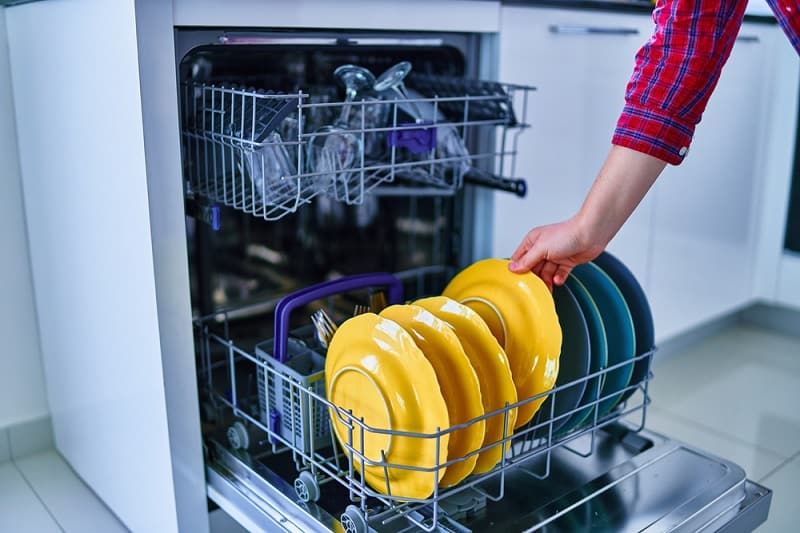Whether you’ve just got your first dishwasher or you’re looking for some tips, it’s important to know how to use it correctly.
Some people get frustrated at their dishwashers when dishes come out dirty, but the efficiency of a dishwasher depends on whether you use it correctly.
Read this guide to find out how to use a dishwasher so that your dishes come out sparkling each time, with minimal effort.
Using a Dishwasher for the First Time
If you’ve just installed a brand-new dishwasher, or even bought one second hand, you should always run an empty load first.
This helps to clean the machine of the chemicals that may have been left over during the manufacturing process, or any dust or dirt that built up during storage and transport.
This step is also useful for you getting to grips with the machine and making sure there are no faults.
Choosing the right detergent for your machine is important. If you’re unsure which detergent to choose, check your manual as it may have recommendations. You can also choose a detergent based on the hardness of your water.
Familiarise yourself with the settings on your machine. Most dishwashers have programmes that correspond to how dirty your dishes are and some may also have time-saving options or the ability to choose a hotter wash.
Always consult the manual before using your dishwasher as it will detail the different programmes, advise on what kind of detergent to use and whether there are any restrictions to be aware of.
Step-by-Step Guide to Using a Dishwasher
1. Loading
There is a right and wrong way to load a dishwasher and doing it the wrong way will stop dishes from getting completely clean.
- Firstly, it’s not necessary to rinse dishes off first unless they have sticky food that won’t budge, such as porridge, or big chunks of food such as cake or bread.
- Place larger items such as bowls and pots on the bottom rack with the opening facing down. This will ensure that the water sprays into the dirtiest parts. Be sure not to obstruct the water jets by placing something large directly on top of them.
- Place plates in the plate rack at the back and cutlery in the cutlery basket. If there isn’t a cutlery basket, place the cutlery on its side on the top rack.
- Place smaller plates, bowls and mugs on the top rack. Again, place them face down so that the water can remove the stains.
- Make sure plastic items are secure, you can even place an item on top of them, as they may move in the wash.
- Be careful what you put into your dishwasher. Certain materials such as wood, cast iron, aluminium and sterling silver will be damaged by the dishwashing process. Avoid putting expensive dishware in the dishwasher. Even if it should be dishwasher safe, it’s best not to take the risk.
Try not to overload your dishwasher as the water won’t be able to get to each item and some items may not get clean.
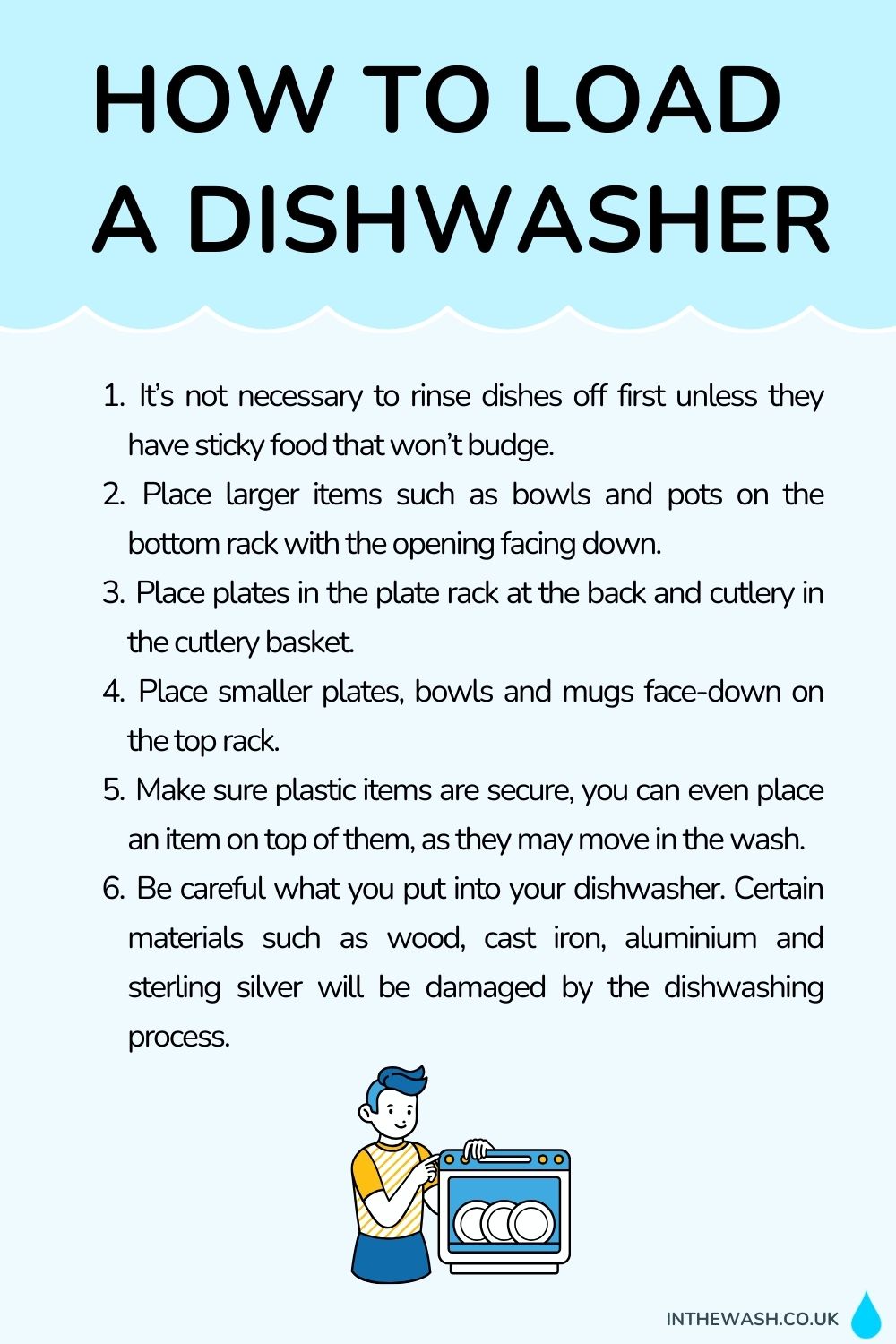
2. Add detergent
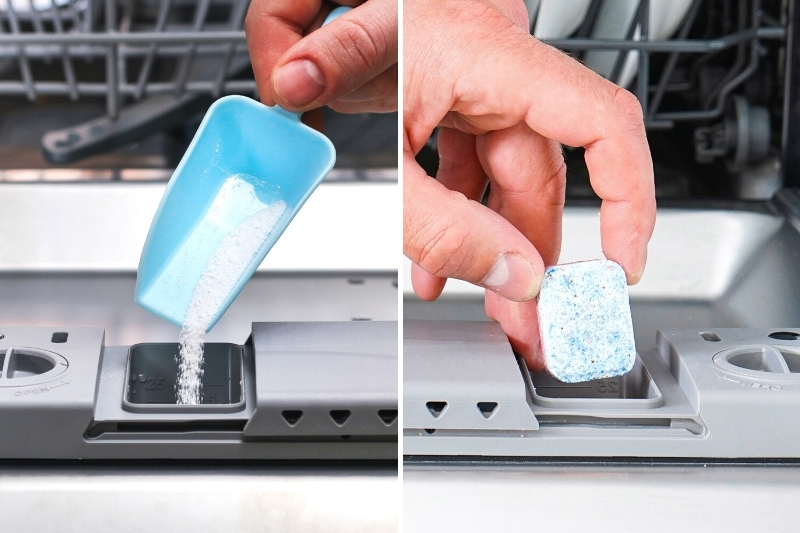
Unless indicated otherwise in the instruction manual, add your detergent to the dispenser. All detergent goes in here, whichever one you choose; powder, liquid, tablets or pods.
Don’t use washing up liquid in your dishwasher! This will lead to too many suds. Your dishes won’t get clean and your machine could possibly leak.
Whilst pods and tablets are straightforward, be sure to add the correct amount of liquid or powder as indicated on the packaging.
Make sure the dispenser is firmly closed before starting the dishwasher.
3. Select the right programme
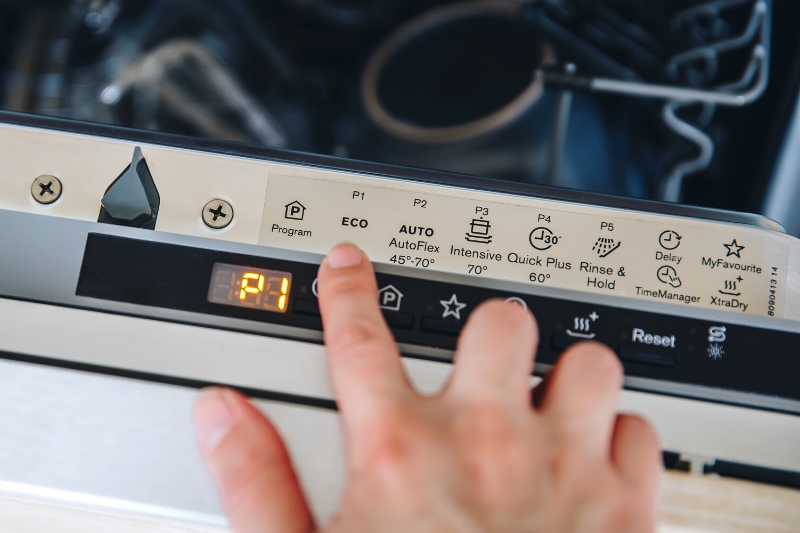
For most day-to-day cleaning, you can use the light dishwasher function. Switch to a heavier cycle if your dishes are particularly dirty or have food stuck on them. You can also use a heavier cycle if your dishes don’t come out clean the first time.
Try to use a lighter cycle as this will save on water and energy. That said, you may need to increase the temperature for greasy items.
A light to normal cycle should take around 2.5 hours in total, but it varies depending on the model of dishwasher.
Some models also include a drying option. This usually isn’t necessary as your dishes will air dry when you open the machine.
However, if you want to use or store them right away, you can use this cycle to speed up the process.
How to Clean a Dishwasher
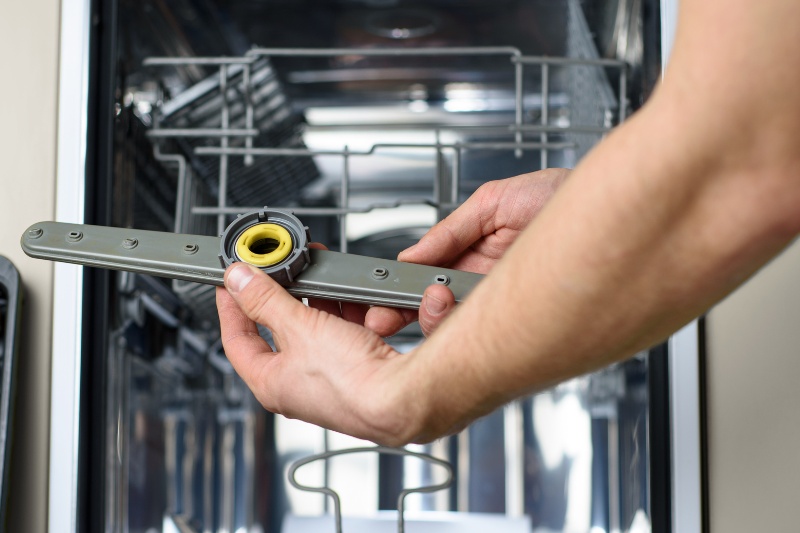
It may seem counterproductive since it’s cleaning your dishes, but you need to clean your machine regularly.
Aim to clean your dishwasher around once a month following these steps:
- Clean the outside of the dishwasher with a cloth and washing up liquid. For stainless steel models, you can use glass cleaner.
- Take out all of the removable parts from the machine and wash them with washing up liquid in the sink.
- Wipe down the interior with a cloth and soapy water to remove any food or dirt buildup.
- Run an empty cycle with a cup of vinegar to thoroughly clean the inside of the machine.

In The Wash is your guide to the best laundry and cleaning products, tips and tricks. Our mission is to solve the UK’s cleaning and laundry dilemmas!
